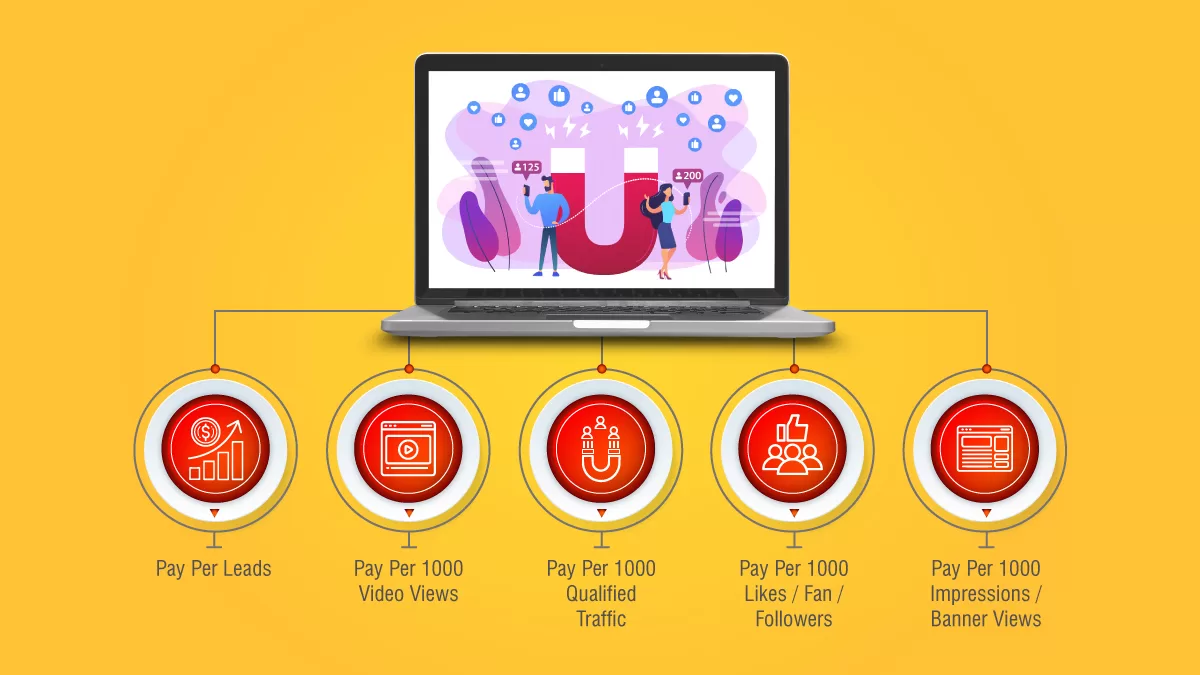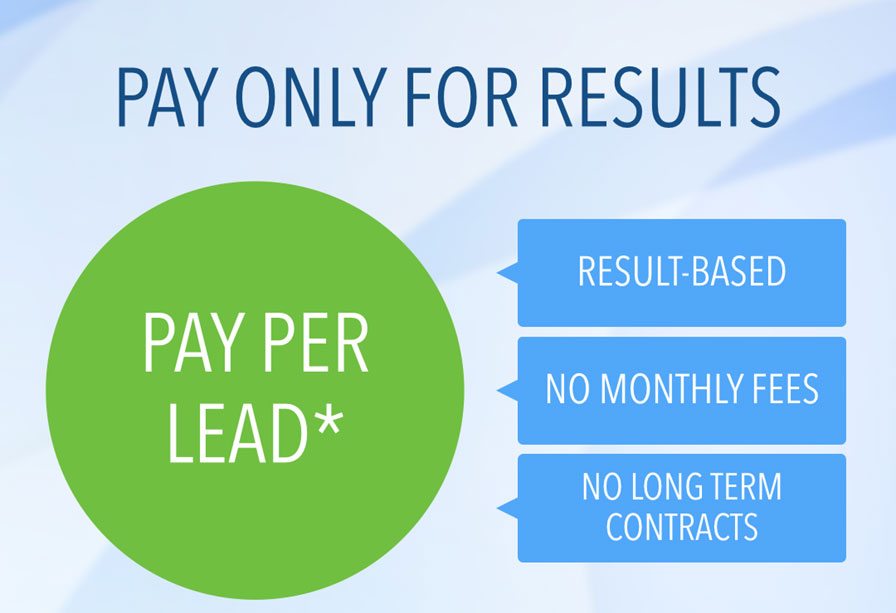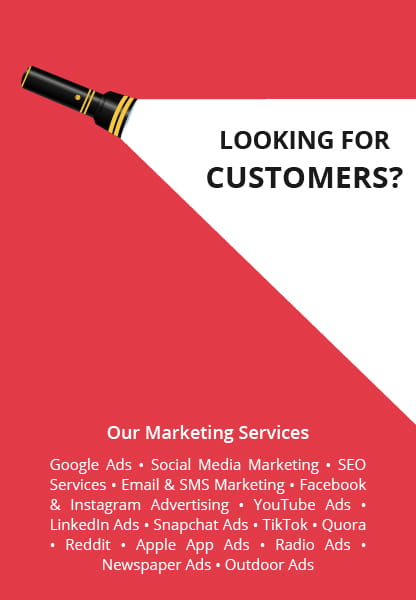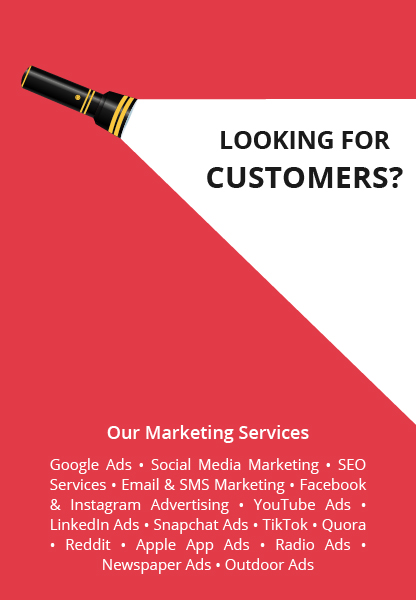Pay Per Lead Marketing – Generate More Leads for your Business. Pay only for Leads

WHAT IS PAY-PER-LEAD MARKETING?
Pay per lead means you only pay when you get a prospect inquiry. Pay Per Lead is a new concept in lead generation.Basically, you pay for a lead as it occurs, and when a prospective client is actually looking for your product or service.This service is currently not applicable to all industries.
PAY ONLY FOR RESULTS

Want to remove the risk from Email & SMS marketing?
- Today businesses are paying several thousands of dirhams every month or employ a full-time SEO expert or digital marketing agency. They also do email and SMS marketing to market their website in order to rank on the first page of Google. Even after paying, results are not guaranteed. It’s like throwing coins on the wall hoping that some of them will hang on.
- ‘If you’re looking for Pay Per Lead program in Dubai, UAE. Leads Dubai can assist you. Pay per lead is the most cost-effective low-risk approach available today!’
-
Our Pay per lead marketing program can ensure that you are only paying for qualified leads. At Leads Dubai we utilize a variety of digital marketing strategies to drive your business leads at a fixed cost per lead. This service is ideal for clients who do not want to spend their time and money testing things.

Our Lead Generation Model is very straightforward. We generate leads by doing pay-per-click advertising on google Adwords and social media marketing like Facebook ads and more. This method works both for B2B & B2C advertising. Leads Dubai is also certified Google Ads Partner since 2013 and we know the “Pay-Per-Click” system inside-out. We can make our experience work for you. This is a win–win scenario.
ENQUIRE ABOUT PAY PER LEAD FOR YOUR BUSINESS

If you want to learn about pay per lead, you can improve your marketing campaign knowledge and do it yourself too
Leads Dubai is a Lead Generation Company in UAE. We pay per lead. Call+971 50 304 7470 to generate new qualified leads. pay per lead Dubai. Get more customers Leads.
Check with us for best Google Ads Combo Offer Right Now – Call +971 50 304 7470.
Quick Enquiry
FAQ - Pay-Per-Lead Advertising Company in Dubai
What is the pay per lead?
The cost per lead (CPL) can vary widely depending on the industry, advertising method, and the
quality of leads generated. Here are some general considerations:
1. Industry Norms: Different industries have varying CPL averages based on competition and
the complexity of the sales process. For instance, B2B leads tend to be more expensive than
B2C leads due to longer sales cycles and higher value transactions.
2. Advertising Channel: CPL can differ based on the advertising platform used (e.g., Google
Ads, Facebook Ads, LinkedIn Ads) and the targeting capabilities available on each platform.
3. Lead Quality: Higher quality leads, which are more likely to convert into paying customers,
generally come at a higher CPL. Quality can be influenced by targeting accuracy, ad
messaging, and the attractiveness of the offer.
4. Campaign Effectiveness: Efficiently managed campaigns with optimized targeting,
compelling ad creatives, and effective landing pages can lower CPL by improving conversion
rates.
5. Average CPL Ranges: As a rough guide:
o B2B CPLs can range from $20 to $200 or more, depending on the industry and lead
quality.
o B2C CPLs are generally lower, ranging from a few dollars to tens of dollars,
depending on the product or service offered.
6. Calculating CPL: To calculate CPL, divide the total advertising spend by the number of leads
generated:
CPL={Total Advertising Spend}\{Number of Leads}
Ultimately, the cost per lead varies based on numerous factors and should be analyzed within the
context of specific advertising campaigns and business objectives.
quality of leads generated. Here are some general considerations:
1. Industry Norms: Different industries have varying CPL averages based on competition and
the complexity of the sales process. For instance, B2B leads tend to be more expensive than
B2C leads due to longer sales cycles and higher value transactions.
2. Advertising Channel: CPL can differ based on the advertising platform used (e.g., Google
Ads, Facebook Ads, LinkedIn Ads) and the targeting capabilities available on each platform.
3. Lead Quality: Higher quality leads, which are more likely to convert into paying customers,
generally come at a higher CPL. Quality can be influenced by targeting accuracy, ad
messaging, and the attractiveness of the offer.
4. Campaign Effectiveness: Efficiently managed campaigns with optimized targeting,
compelling ad creatives, and effective landing pages can lower CPL by improving conversion
rates.
5. Average CPL Ranges: As a rough guide:
o B2B CPLs can range from $20 to $200 or more, depending on the industry and lead
quality.
o B2C CPLs are generally lower, ranging from a few dollars to tens of dollars,
depending on the product or service offered.
6. Calculating CPL: To calculate CPL, divide the total advertising spend by the number of leads
generated:
CPL={Total Advertising Spend}\{Number of Leads}
Ultimately, the cost per lead varies based on numerous factors and should be analyzed within the
context of specific advertising campaigns and business objectives.
How do you calculate pay per lead?
Calculating pay per lead (PPL) involves determining the cost incurred for each generated lead in an
advertising campaign. Here’s how you can calculate it:
1. Total Advertising Spend: Determine the total amount spent on advertising for a specific
campaign or period.
2. Number of Leads Generated: Count the total number of leads generated from the
campaign. A lead is typically defined as a potential customer who has shown interest by
taking a specific action, such as filling out a form or making an inquiry.
3. Calculate Pay Per Lead (PPL):
o Use the formula to calculate PPL:
o PPL= Advertising Spend / Number of Leads Generated Total
4. Example Calculation:
o Suppose you spent AED 10,000 on a campaign that generated 100 leads.
o Calculate PPL = 10,000/100 = AED 100 per lead
5. Interpreting PPL:
o PPL helps assess the cost efficiency of lead generation efforts.
o Lower PPL indicates more cost-effective lead generation.
6. Analyzing and Optimizing Campaigns:
o Monitor PPL over time to evaluate campaign performance.
o Adjust targeting, messaging, or advertising strategies to improve PPL and overall
campaign effectiveness.
By calculating PPL, businesses can better understand their cost per acquisition and optimize
marketing strategies to maximize return on investment from lead generation campaigns.
advertising campaign. Here’s how you can calculate it:
1. Total Advertising Spend: Determine the total amount spent on advertising for a specific
campaign or period.
2. Number of Leads Generated: Count the total number of leads generated from the
campaign. A lead is typically defined as a potential customer who has shown interest by
taking a specific action, such as filling out a form or making an inquiry.
3. Calculate Pay Per Lead (PPL):
o Use the formula to calculate PPL:
o PPL= Advertising Spend / Number of Leads Generated Total
4. Example Calculation:
o Suppose you spent AED 10,000 on a campaign that generated 100 leads.
o Calculate PPL = 10,000/100 = AED 100 per lead
5. Interpreting PPL:
o PPL helps assess the cost efficiency of lead generation efforts.
o Lower PPL indicates more cost-effective lead generation.
6. Analyzing and Optimizing Campaigns:
o Monitor PPL over time to evaluate campaign performance.
o Adjust targeting, messaging, or advertising strategies to improve PPL and overall
campaign effectiveness.
By calculating PPL, businesses can better understand their cost per acquisition and optimize
marketing strategies to maximize return on investment from lead generation campaigns.
How to find leads in Dubai?
Finding leads in Dubai, or any location, involves targeted strategies to identify and connect with
potential customers who are interested in your products or services. Here are some effective ways
to find leads in Dubai:
1. Define Your Target Audience:
o Understand your ideal customer profile including demographics, interests, and
behaviors.
2. Utilize Online Platforms:
o Social media: Engage with potential leads on platforms like LinkedIn, Facebook,
Instagram, and Twitter through targeted content and advertising.
o Business Directories: Use local directories such as Yellow Pages UAE, Dubai Chamber
of Commerce, and industry-specific directories to find businesses and potential B2B
leads.
o Online Forums and Communities: Participate in forums, groups, and online
communities relevant to your industry or target market to connect with potential
leads.
3. Networking Events:
o Attend industry events, conferences, seminars, and networking meetups in Dubai to
meet potential leads face-to-face and build relationships.
4. Content Marketing:
o Create valuable content such as blog posts, eBooks, and guides that address the pain
points and interests of your target audience. Use SEO strategies to attract organic
traffic and generate leads.
5. Email Marketing:
o Build an email list through opt-ins on your website, social media channels, and
events. Use targeted email campaigns to nurture leads and convert them into
customers.
6. Paid Advertising:
o Use online advertising platforms like Google Ads and social media ads (e.g.,
Facebook Ads, LinkedIn Ads) to target specific demographics and interests in Dubai.
7. Partnerships and Referrals:
o Collaborate with complementary businesses or industry influencers in Dubai to tap
into their customer base and gain referrals.
8. Cold Calling and Direct Outreach:
o Identify potential leads and reach out directly via phone calls or personalized emails.
Ensure your messaging is relevant and offers value to the recipient.
9. Customer Recommendations:
o Encourage satisfied customers to refer others in their network who may benefit
from your products or services.
10. Local SEO Optimization:
o Optimize your website for local search terms related to Dubai. Ensure your business
is listed on Google My Business and other local directories.
By combining these strategies and consistently nurturing relationships with leads, you can effectively
generate and convert leads in Dubai to grow your business.
potential customers who are interested in your products or services. Here are some effective ways
to find leads in Dubai:
1. Define Your Target Audience:
o Understand your ideal customer profile including demographics, interests, and
behaviors.
2. Utilize Online Platforms:
o Social media: Engage with potential leads on platforms like LinkedIn, Facebook,
Instagram, and Twitter through targeted content and advertising.
o Business Directories: Use local directories such as Yellow Pages UAE, Dubai Chamber
of Commerce, and industry-specific directories to find businesses and potential B2B
leads.
o Online Forums and Communities: Participate in forums, groups, and online
communities relevant to your industry or target market to connect with potential
leads.
3. Networking Events:
o Attend industry events, conferences, seminars, and networking meetups in Dubai to
meet potential leads face-to-face and build relationships.
4. Content Marketing:
o Create valuable content such as blog posts, eBooks, and guides that address the pain
points and interests of your target audience. Use SEO strategies to attract organic
traffic and generate leads.
5. Email Marketing:
o Build an email list through opt-ins on your website, social media channels, and
events. Use targeted email campaigns to nurture leads and convert them into
customers.
6. Paid Advertising:
o Use online advertising platforms like Google Ads and social media ads (e.g.,
Facebook Ads, LinkedIn Ads) to target specific demographics and interests in Dubai.
7. Partnerships and Referrals:
o Collaborate with complementary businesses or industry influencers in Dubai to tap
into their customer base and gain referrals.
8. Cold Calling and Direct Outreach:
o Identify potential leads and reach out directly via phone calls or personalized emails.
Ensure your messaging is relevant and offers value to the recipient.
9. Customer Recommendations:
o Encourage satisfied customers to refer others in their network who may benefit
from your products or services.
10. Local SEO Optimization:
o Optimize your website for local search terms related to Dubai. Ensure your business
is listed on Google My Business and other local directories.
By combining these strategies and consistently nurturing relationships with leads, you can effectively
generate and convert leads in Dubai to grow your business.
What is a reasonable cost per lead?
The reasonable cost per lead (CPL) can vary widely depending on factors such as industry, target
audience, and marketing strategy. Here are some general benchmarks:
1. Industry Norms: Different industries have different average CPLs. For example, industries
like software as a service (SaaS) or financial services typically have higher CPLs compared to
industries like consumer goods.
2. Target Audience: The specificity and size of your target audience can impact CPL. Narrowly
targeted leads might cost more to acquire, but they could also be more valuable if they
convert at a higher rate.
3. Marketing Channels: The CPL can differ significantly based on the marketing channels used
(e.g., social media ads, search engine marketing, content marketing). Each channel has its
own cost structure and effectiveness.
4. Quality of Leads: It’s crucial to consider not just the cost but also the quality of leads
generated. A higher CPL may be justified if the leads are more likely to convert into paying
customers.
5. Campaign Goals: Your campaign objectives (e.g., brand awareness, lead generation, sales
conversion) will influence what constitutes a reasonable CPL. Lead generation campaigns
typically aim for lower CPLs compared to broader awareness campaigns.
6. ROI Considerations: Ultimately, the CPL should be evaluated in the context of return on
investment (ROI). A higher CPL can be justified if it leads to higher-value sales or long-term
customer relationships.
audience, and marketing strategy. Here are some general benchmarks:
1. Industry Norms: Different industries have different average CPLs. For example, industries
like software as a service (SaaS) or financial services typically have higher CPLs compared to
industries like consumer goods.
2. Target Audience: The specificity and size of your target audience can impact CPL. Narrowly
targeted leads might cost more to acquire, but they could also be more valuable if they
convert at a higher rate.
3. Marketing Channels: The CPL can differ significantly based on the marketing channels used
(e.g., social media ads, search engine marketing, content marketing). Each channel has its
own cost structure and effectiveness.
4. Quality of Leads: It’s crucial to consider not just the cost but also the quality of leads
generated. A higher CPL may be justified if the leads are more likely to convert into paying
customers.
5. Campaign Goals: Your campaign objectives (e.g., brand awareness, lead generation, sales
conversion) will influence what constitutes a reasonable CPL. Lead generation campaigns
typically aim for lower CPLs compared to broader awareness campaigns.
6. ROI Considerations: Ultimately, the CPL should be evaluated in the context of return on
investment (ROI). A higher CPL can be justified if it leads to higher-value sales or long-term
customer relationships.
How to charge cost per lead?
Charging for cost per lead (CPL) involves establishing a pricing structure where the advertiser pays
based on the number of leads generated rather than impressions or clicks. Here are common
methods and considerations for charging CPL:
1. Define a Lead: First and foremost, both parties (advertiser and publisher) must agree on
what constitutes a qualified lead. This typically involves defining specific criteria such as
contact information, demographics, or specific actions (like filling out a form or signing up
for a trial).
2. Negotiate Pricing: CPL rates can vary widely depending on industry, lead quality, and the
difficulty of acquiring leads. Negotiate a rate that both parties find reasonable based on
factors such as conversion rates, lifetime value of customers, and the competitive landscape.
3. Set Lead Volume Goals: Determine how many leads the advertiser expects to receive within
a specified timeframe. This helps in setting realistic expectations and adjusting the CPL rate
accordingly.
4. Tracking and Validation: Implement tracking mechanisms to accurately count and verify
leads. This may involve using tracking pixels, form submissions, or unique phone numbers to
attribute leads to specific campaigns or channels.
5. Payment Terms: Decide on payment terms, such as whether payment is made per lead
delivered or on a regular basis (e.g., monthly). Clear payment terms help prevent
misunderstandings and ensure timely compensation for the publisher.
6. Quality Control: Establish mechanisms to ensure lead quality meets agreed-upon standards.
This may include reviewing lead details before payment, implementing fraud detection
measures, or validating leads through verification processes.
7. Optimization and Reporting: Continuously monitor and optimize campaigns to improve lead
quality and CPL efficiency. Regular reporting on lead performance helps both parties assess
the effectiveness of the CPL arrangement.
8. Legal Agreements: Formalize the CPL agreement with a contract that outlines all terms and
conditions, including responsibilities, payment terms, dispute resolution, and confidentiality.
based on the number of leads generated rather than impressions or clicks. Here are common
methods and considerations for charging CPL:
1. Define a Lead: First and foremost, both parties (advertiser and publisher) must agree on
what constitutes a qualified lead. This typically involves defining specific criteria such as
contact information, demographics, or specific actions (like filling out a form or signing up
for a trial).
2. Negotiate Pricing: CPL rates can vary widely depending on industry, lead quality, and the
difficulty of acquiring leads. Negotiate a rate that both parties find reasonable based on
factors such as conversion rates, lifetime value of customers, and the competitive landscape.
3. Set Lead Volume Goals: Determine how many leads the advertiser expects to receive within
a specified timeframe. This helps in setting realistic expectations and adjusting the CPL rate
accordingly.
4. Tracking and Validation: Implement tracking mechanisms to accurately count and verify
leads. This may involve using tracking pixels, form submissions, or unique phone numbers to
attribute leads to specific campaigns or channels.
5. Payment Terms: Decide on payment terms, such as whether payment is made per lead
delivered or on a regular basis (e.g., monthly). Clear payment terms help prevent
misunderstandings and ensure timely compensation for the publisher.
6. Quality Control: Establish mechanisms to ensure lead quality meets agreed-upon standards.
This may include reviewing lead details before payment, implementing fraud detection
measures, or validating leads through verification processes.
7. Optimization and Reporting: Continuously monitor and optimize campaigns to improve lead
quality and CPL efficiency. Regular reporting on lead performance helps both parties assess
the effectiveness of the CPL arrangement.
8. Legal Agreements: Formalize the CPL agreement with a contract that outlines all terms and
conditions, including responsibilities, payment terms, dispute resolution, and confidentiality.
Is pay per lead profitable?
Pay per lead (PPL) can be profitable for both advertisers and publishers when implemented
effectively. Here are some factors that contribute to the profitability of pay per lead arrangements:
1. Cost Control: Advertisers benefit from paying only for actual leads generated, rather than
for clicks or impressions that may not convert. This can lead to a more efficient use of
marketing budgets.
2. Quality Leads: If the agreed-upon criteria for a qualified lead are well-defined and
consistently met, advertisers receive higher-quality leads that are more likely to convert into
customers. This improves the return on investment (ROI) for the advertiser.
3. Performance-Based Pricing: PPL aligns incentives between advertisers and publishers.
Publishers are incentivized to generate higher-quality leads because their compensation is
tied directly to lead generation success.
4. Scalability: PPL arrangements can scale with the needs of the advertiser. As more leads are
required, the publisher can adjust their efforts accordingly, provided there is capacity to
generate more leads without compromising quality.
5. Flexibility: PPL allows advertisers to test different markets, messages, and lead generation
tactics without committing to upfront costs. This flexibility can lead to discovering more
effective marketing strategies over time.
6. Risk Management: Advertisers mitigate the risk of paying for ineffective advertising by
focusing on results rather than activities. If a campaign is not generating leads, adjustments
can be made without incurring sunk costs.
However, the profitability of PPL arrangements depends on several factors:
• Lead Quality: Ensuring that leads meet the agreed-upon criteria is crucial. Poor-quality leads
can diminish the profitability of the arrangement.
• Cost Per Lead (CPL): The CPL should be reasonable relative to the potential value of each
lead. If CPLs are too high and conversion rates are low, profitability can be compromised.
• Effective Tracking and Attribution: Accurate tracking and attribution of leads to specific
campaigns or channels are essential to optimize performance and justify costs.
• Market Demand: The demand for the product or service being promoted affects the volume
and quality of leads generated. Advertisers in niche markets or with highly specialized
offerings may find PPL less profitable if lead volume is limited.
In conclusion, pay per lead can be a profitable model when executed with clear expectations, quality
control measures, and continuous optimization efforts. It offers advantages in cost efficiency,
performance-based pricing, and scalability, but success hinges on effective collaboration between
advertisers and publishers to achieve mutual goals.
effectively. Here are some factors that contribute to the profitability of pay per lead arrangements:
1. Cost Control: Advertisers benefit from paying only for actual leads generated, rather than
for clicks or impressions that may not convert. This can lead to a more efficient use of
marketing budgets.
2. Quality Leads: If the agreed-upon criteria for a qualified lead are well-defined and
consistently met, advertisers receive higher-quality leads that are more likely to convert into
customers. This improves the return on investment (ROI) for the advertiser.
3. Performance-Based Pricing: PPL aligns incentives between advertisers and publishers.
Publishers are incentivized to generate higher-quality leads because their compensation is
tied directly to lead generation success.
4. Scalability: PPL arrangements can scale with the needs of the advertiser. As more leads are
required, the publisher can adjust their efforts accordingly, provided there is capacity to
generate more leads without compromising quality.
5. Flexibility: PPL allows advertisers to test different markets, messages, and lead generation
tactics without committing to upfront costs. This flexibility can lead to discovering more
effective marketing strategies over time.
6. Risk Management: Advertisers mitigate the risk of paying for ineffective advertising by
focusing on results rather than activities. If a campaign is not generating leads, adjustments
can be made without incurring sunk costs.
However, the profitability of PPL arrangements depends on several factors:
• Lead Quality: Ensuring that leads meet the agreed-upon criteria is crucial. Poor-quality leads
can diminish the profitability of the arrangement.
• Cost Per Lead (CPL): The CPL should be reasonable relative to the potential value of each
lead. If CPLs are too high and conversion rates are low, profitability can be compromised.
• Effective Tracking and Attribution: Accurate tracking and attribution of leads to specific
campaigns or channels are essential to optimize performance and justify costs.
• Market Demand: The demand for the product or service being promoted affects the volume
and quality of leads generated. Advertisers in niche markets or with highly specialized
offerings may find PPL less profitable if lead volume is limited.
In conclusion, pay per lead can be a profitable model when executed with clear expectations, quality
control measures, and continuous optimization efforts. It offers advantages in cost efficiency,
performance-based pricing, and scalability, but success hinges on effective collaboration between
advertisers and publishers to achieve mutual goals.
How to start pay per lead?
Starting a pay per lead (PPL) business involves several key steps to ensure success and profitability.
Here’s a comprehensive guide on how to get started:
1. Choose Your Niche and Offerings:
o Identify a Niche: Select a specific industry or market segment where you have
expertise or can effectively generate leads.
o Define Offerings: Determine what types of leads you will generate (e.g., sales leads,
service inquiries, subscriptions) and the criteria that define a qualified lead.
2. Build Your Lead Generation Strategy:
o Research and Plan: Conduct market research to understand your target audience
and their needs. Develop a strategic plan outlining how you will attract and convert
leads.
o Select Lead Generation Channels: Choose the marketing channels (e.g., digital
advertising, content marketing, email campaigns, SEO) that align with your target
audience and budget.
3. Create a Lead Capture System:
o Develop Landing Pages: Design and optimize landing pages that effectively capture
leads. These pages should clearly communicate the value proposition and encourage
visitors to take action.
o Implement Lead Forms: Set up lead capture forms with fields that gather essential
information from prospects. Balance the amount of information requested with the
ease of form completion to maximize conversions.
4. Establish Relationships with Advertisers or Clients:
o Identify Potential Clients: Reach out to businesses or advertisers who are interested
in acquiring leads within your chosen niche.
o Negotiate Terms: Define the criteria for a qualified lead and negotiate payment
terms, such as the cost per lead and frequency of payment.
5. Track and Optimize Lead Generation:
o Implement Tracking Tools: Use analytics and tracking tools (e.g., Google Analytics,
CRM systems) to monitor the performance of your lead generation efforts.
o Optimize Campaigns: Continuously test and refine your campaigns to improve lead
quality and conversion rates. Adjust strategies based on data-driven insights to
maximize ROI.
6. Ensure Compliance and Quality Assurance:
o Adhere to Regulations: Familiarize yourself with legal requirements and regulations
related to data privacy and advertising practices.
o Maintain Lead Quality: Implement quality control measures to ensure that leads
meet agreed-upon criteria. Regularly review lead information and provide feedback
to optimize lead generation processes.
7. Scale Your Operations:
o Expand Reach: Explore opportunities to expand your reach by targeting new
geographic regions or additional market segments.
o Automate Processes: Utilize automation tools and systems to streamline lead
generation, capture, and distribution processes as your business grows.
8. Evaluate and Iterate:
o Monitor Performance: Track key metrics such as CPL, conversion rates, and client
satisfaction to assess the success of your PPL business.
o Iterate Based on Feedback: Gather feedback from advertisers and clients to identify
areas for improvement and make necessary adjustments to enhance profitability
and client satisfaction.
Starting a pay per lead business requires careful planning, effective execution of lead generation
strategies, and ongoing optimization efforts to deliver valuable leads to clients while ensuring
profitability and sustainability.
Here’s a comprehensive guide on how to get started:
1. Choose Your Niche and Offerings:
o Identify a Niche: Select a specific industry or market segment where you have
expertise or can effectively generate leads.
o Define Offerings: Determine what types of leads you will generate (e.g., sales leads,
service inquiries, subscriptions) and the criteria that define a qualified lead.
2. Build Your Lead Generation Strategy:
o Research and Plan: Conduct market research to understand your target audience
and their needs. Develop a strategic plan outlining how you will attract and convert
leads.
o Select Lead Generation Channels: Choose the marketing channels (e.g., digital
advertising, content marketing, email campaigns, SEO) that align with your target
audience and budget.
3. Create a Lead Capture System:
o Develop Landing Pages: Design and optimize landing pages that effectively capture
leads. These pages should clearly communicate the value proposition and encourage
visitors to take action.
o Implement Lead Forms: Set up lead capture forms with fields that gather essential
information from prospects. Balance the amount of information requested with the
ease of form completion to maximize conversions.
4. Establish Relationships with Advertisers or Clients:
o Identify Potential Clients: Reach out to businesses or advertisers who are interested
in acquiring leads within your chosen niche.
o Negotiate Terms: Define the criteria for a qualified lead and negotiate payment
terms, such as the cost per lead and frequency of payment.
5. Track and Optimize Lead Generation:
o Implement Tracking Tools: Use analytics and tracking tools (e.g., Google Analytics,
CRM systems) to monitor the performance of your lead generation efforts.
o Optimize Campaigns: Continuously test and refine your campaigns to improve lead
quality and conversion rates. Adjust strategies based on data-driven insights to
maximize ROI.
6. Ensure Compliance and Quality Assurance:
o Adhere to Regulations: Familiarize yourself with legal requirements and regulations
related to data privacy and advertising practices.
o Maintain Lead Quality: Implement quality control measures to ensure that leads
meet agreed-upon criteria. Regularly review lead information and provide feedback
to optimize lead generation processes.
7. Scale Your Operations:
o Expand Reach: Explore opportunities to expand your reach by targeting new
geographic regions or additional market segments.
o Automate Processes: Utilize automation tools and systems to streamline lead
generation, capture, and distribution processes as your business grows.
8. Evaluate and Iterate:
o Monitor Performance: Track key metrics such as CPL, conversion rates, and client
satisfaction to assess the success of your PPL business.
o Iterate Based on Feedback: Gather feedback from advertisers and clients to identify
areas for improvement and make necessary adjustments to enhance profitability
and client satisfaction.
Starting a pay per lead business requires careful planning, effective execution of lead generation
strategies, and ongoing optimization efforts to deliver valuable leads to clients while ensuring
profitability and sustainability.
Is pay per lead legit?
Yes, pay per lead (PPL) is a legitimate and widely used business model in digital marketing and lead
generation. Here are several reasons why pay per lead is considered legitimate:
1. Transparency: PPL agreements are typically based on clear terms and conditions agreed
upon by both parties (advertiser and lead generator). These terms outline what constitutes a
qualified lead, how leads are tracked, and the agreed-upon payment per lead.
2. Performance-Based: PPL is a performance-based pricing model where advertisers pay only
for actual leads generated, rather than for impressions or clicks that may or may not result
in conversions. This aligns incentives between the lead generator and the advertiser.
3. Quality Focus: Successful PPL campaigns prioritize lead quality, ensuring that leads meet
specific criteria defined by the advertiser. Lead generators often implement measures to
validate and verify leads before they are delivered to advertisers.
4. Legal Compliance: Adherence to legal and ethical guidelines is crucial in PPL arrangements.
This includes compliance with data privacy laws (such as GDPR or CCPA) and transparency in
how lead information is collected, stored, and shared.
5. Industry Standards: PPL has become a standard practice in various industries, including
insurance, financial services, education, and healthcare. Advertisers benefit from the
flexibility and accountability offered by PPL arrangements.
However, like any business model, there are considerations to ensure that PPL activities are
conducted ethically and effectively:
• Clear Communication: It’s essential for both parties to clearly define expectations, including
lead criteria, payment terms, and performance metrics.
• Quality Assurance: Lead generators should implement quality control measures to ensure
that leads delivered meet the agreed-upon standards. This includes verifying lead
information and ensuring leads are genuinely interested prospects.
• Compliance: Adherence to legal and regulatory requirements, particularly concerning data
privacy and consumer rights, is critical to maintaining trust and legitimacy.
Overall, pay per lead is a legitimate and effective model for generating leads and can provide
benefits to both advertisers seeking qualified leads and lead generators looking to monetize their
lead generation efforts. As with any business arrangement, transparency, adherence to standards,
and ethical conduct are key to its success and reputation.
generation. Here are several reasons why pay per lead is considered legitimate:
1. Transparency: PPL agreements are typically based on clear terms and conditions agreed
upon by both parties (advertiser and lead generator). These terms outline what constitutes a
qualified lead, how leads are tracked, and the agreed-upon payment per lead.
2. Performance-Based: PPL is a performance-based pricing model where advertisers pay only
for actual leads generated, rather than for impressions or clicks that may or may not result
in conversions. This aligns incentives between the lead generator and the advertiser.
3. Quality Focus: Successful PPL campaigns prioritize lead quality, ensuring that leads meet
specific criteria defined by the advertiser. Lead generators often implement measures to
validate and verify leads before they are delivered to advertisers.
4. Legal Compliance: Adherence to legal and ethical guidelines is crucial in PPL arrangements.
This includes compliance with data privacy laws (such as GDPR or CCPA) and transparency in
how lead information is collected, stored, and shared.
5. Industry Standards: PPL has become a standard practice in various industries, including
insurance, financial services, education, and healthcare. Advertisers benefit from the
flexibility and accountability offered by PPL arrangements.
However, like any business model, there are considerations to ensure that PPL activities are
conducted ethically and effectively:
• Clear Communication: It’s essential for both parties to clearly define expectations, including
lead criteria, payment terms, and performance metrics.
• Quality Assurance: Lead generators should implement quality control measures to ensure
that leads delivered meet the agreed-upon standards. This includes verifying lead
information and ensuring leads are genuinely interested prospects.
• Compliance: Adherence to legal and regulatory requirements, particularly concerning data
privacy and consumer rights, is critical to maintaining trust and legitimacy.
Overall, pay per lead is a legitimate and effective model for generating leads and can provide
benefits to both advertisers seeking qualified leads and lead generators looking to monetize their
lead generation efforts. As with any business arrangement, transparency, adherence to standards,
and ethical conduct are key to its success and reputation.
What is a good lead rate?
A “good” lead rate or cost per lead (CPL) can vary widely depending on factors such as industry,
target audience, and the specific goals of a marketing campaign. Here are some considerations to
determine what constitutes a good lead rate:
1. Industry Benchmarks: Different industries have different average CPLs based on their
market dynamics, competition level, and the value of products or services offered. For
example, industries like finance and insurance typically have higher CPLs compared to retail
or consumer goods.
2. Lead Quality: The quality of leads generated is crucial. A higher CPL may be justified if the
leads are more likely to convert into paying customers or have a higher lifetime value.
Quality can be measured by factors such as conversion rates, engagement levels, and fit with
the target customer profile.
3. Campaign Goals: The CPL should align with the specific objectives of the marketing
campaign. Lead generation campaigns aiming for high-quality leads may tolerate higher
CPLs, whereas campaigns focused on maximizing lead volume may prioritize lower CPLs even
if lead quality is slightly compromised.
4. ROI Considerations: Ultimately, the CPL should be evaluated in the context of return on
investment (ROI). A good lead rate is one that allows the advertiser to achieve a positive ROI
after considering the cost of acquiring the lead and the revenue generated from converting
those leads into customers.
5. Competitive Landscape: The competitiveness of the market and the availability of
alternative marketing channels can influence what is considered a good lead rate. In highly
competitive markets, advertisers may need to accept higher CPLs to reach valuable leads
effectively.
As a general guideline, typical CPLs can range from a few dollars to over $100, depending on the
factors mentioned above. It’s essential for businesses to establish their own benchmarks based on
historical data, industry standards, and campaign objectives. Continuous optimization and
monitoring of CPLs relative to ROI are crucial for determining what constitutes a good lead rate in
specific circumstances.
target audience, and the specific goals of a marketing campaign. Here are some considerations to
determine what constitutes a good lead rate:
1. Industry Benchmarks: Different industries have different average CPLs based on their
market dynamics, competition level, and the value of products or services offered. For
example, industries like finance and insurance typically have higher CPLs compared to retail
or consumer goods.
2. Lead Quality: The quality of leads generated is crucial. A higher CPL may be justified if the
leads are more likely to convert into paying customers or have a higher lifetime value.
Quality can be measured by factors such as conversion rates, engagement levels, and fit with
the target customer profile.
3. Campaign Goals: The CPL should align with the specific objectives of the marketing
campaign. Lead generation campaigns aiming for high-quality leads may tolerate higher
CPLs, whereas campaigns focused on maximizing lead volume may prioritize lower CPLs even
if lead quality is slightly compromised.
4. ROI Considerations: Ultimately, the CPL should be evaluated in the context of return on
investment (ROI). A good lead rate is one that allows the advertiser to achieve a positive ROI
after considering the cost of acquiring the lead and the revenue generated from converting
those leads into customers.
5. Competitive Landscape: The competitiveness of the market and the availability of
alternative marketing channels can influence what is considered a good lead rate. In highly
competitive markets, advertisers may need to accept higher CPLs to reach valuable leads
effectively.
As a general guideline, typical CPLs can range from a few dollars to over $100, depending on the
factors mentioned above. It’s essential for businesses to establish their own benchmarks based on
historical data, industry standards, and campaign objectives. Continuous optimization and
monitoring of CPLs relative to ROI are crucial for determining what constitutes a good lead rate in
specific circumstances.
What is the profit per lead?
The profit per lead refers to the amount of profit a business earns from each qualified lead
generated through its marketing efforts. Calculating the profit per lead involves understanding both
the revenue generated from converting leads into customers and the costs associated with acquiring
and servicing those leads. Here’s how you can calculate and understand profit per lead:
Revenue per Lead:
1. Average Order Value (AOV): Determine the average amount of revenue generated from
each customer transaction. This can vary depending on the products or services offered.
2. Conversion Rate: Calculate the percentage of leads that convert into paying customers. For
example, if 10% of leads convert, then for every 10 leads, you would have 1 paying
customer.
3. Revenue per Lead: Multiply the AOV by the conversion rate to find the average revenue
generated per lead. For instance, if the AOV is $500 and the conversion rate is 10%, the
revenue per lead would be AED 250 x 0.10 = AED 25
Costs per Lead:
1. Cost per Lead (CPL): Determine how much it costs to acquire each lead through marketing
efforts. This includes expenses such as advertising costs, salaries for marketing personnel,
and any other costs directly attributed to lead generation campaigns.
2. Cost of Goods Sold (COGS): Calculate the direct costs associated with delivering products or
services to customers. This may include materials, labor, and overhead costs.
3. Marketing and Sales Costs: Include costs related to marketing campaigns, sales
commissions, and other expenses incurred to convert leads into customers.
Profit per Lead:
1. Calculate Gross Profit per Lead: Subtract the total costs (CPL + COGS + marketing/sales
costs) from the revenue per lead to determine the gross profit per lead. This provides a basic
understanding of the profitability of each lead before considering overhead and
administrative expenses.
2. Consider Overhead and Administrative Costs: To calculate net profit per lead, subtract
additional overhead and administrative costs not directly attributed to lead generation or
customer acquisition.
Example Calculation:
• Revenue per Lead: AED 250 (from earlier calculation)
• CPL: AED 80
• COGS per Customer: AED 400
• Marketing and Sales Costs per Customer: AED 100
Gross Profit per Lead: 25 – (80 + 400 + 100) = -555 AED (negative profit)
In this simplified example, the profit per lead is negative, indicating that the costs associated with
acquiring and servicing the lead exceed the revenue generated. This highlights the importance of
accurately calculating all costs and optimizing both lead generation and customer conversion
processes to achieve positive profitability per lead.
Calculating profit per lead helps businesses assess the effectiveness of their marketing and sales
efforts, optimize resource allocation, and make informed decisions about future investments in lead
generation strategies.
generated through its marketing efforts. Calculating the profit per lead involves understanding both
the revenue generated from converting leads into customers and the costs associated with acquiring
and servicing those leads. Here’s how you can calculate and understand profit per lead:
Revenue per Lead:
1. Average Order Value (AOV): Determine the average amount of revenue generated from
each customer transaction. This can vary depending on the products or services offered.
2. Conversion Rate: Calculate the percentage of leads that convert into paying customers. For
example, if 10% of leads convert, then for every 10 leads, you would have 1 paying
customer.
3. Revenue per Lead: Multiply the AOV by the conversion rate to find the average revenue
generated per lead. For instance, if the AOV is $500 and the conversion rate is 10%, the
revenue per lead would be AED 250 x 0.10 = AED 25
Costs per Lead:
1. Cost per Lead (CPL): Determine how much it costs to acquire each lead through marketing
efforts. This includes expenses such as advertising costs, salaries for marketing personnel,
and any other costs directly attributed to lead generation campaigns.
2. Cost of Goods Sold (COGS): Calculate the direct costs associated with delivering products or
services to customers. This may include materials, labor, and overhead costs.
3. Marketing and Sales Costs: Include costs related to marketing campaigns, sales
commissions, and other expenses incurred to convert leads into customers.
Profit per Lead:
1. Calculate Gross Profit per Lead: Subtract the total costs (CPL + COGS + marketing/sales
costs) from the revenue per lead to determine the gross profit per lead. This provides a basic
understanding of the profitability of each lead before considering overhead and
administrative expenses.
2. Consider Overhead and Administrative Costs: To calculate net profit per lead, subtract
additional overhead and administrative costs not directly attributed to lead generation or
customer acquisition.
Example Calculation:
• Revenue per Lead: AED 250 (from earlier calculation)
• CPL: AED 80
• COGS per Customer: AED 400
• Marketing and Sales Costs per Customer: AED 100
Gross Profit per Lead: 25 – (80 + 400 + 100) = -555 AED (negative profit)
In this simplified example, the profit per lead is negative, indicating that the costs associated with
acquiring and servicing the lead exceed the revenue generated. This highlights the importance of
accurately calculating all costs and optimizing both lead generation and customer conversion
processes to achieve positive profitability per lead.
Calculating profit per lead helps businesses assess the effectiveness of their marketing and sales
efforts, optimize resource allocation, and make informed decisions about future investments in lead
generation strategies.
How much do leads cost?
The cost of leads can vary widely depending on several factors such as industry, lead quality,
geographic location, and the specific marketing channels used. Here are some general
considerations and benchmarks for understanding how much leads might cost in AED (United Arab
Emirates Dirham):
1. Industry: Different industries have different average costs per lead. For example, industries
like finance, insurance, and real estate tend to have higher lead costs due to the complexity
of products and services offered.
2. Lead Quality: Higher-quality leads, which are more likely to convert into paying customers,
typically cost more to acquire. Quality can be influenced by factors such as the specificity of
targeting, lead verification processes, and the relevance of the offer to the lead’s needs.
3. Geographic Location: Lead costs can vary based on the geographic location of the target
audience. Leads in more competitive or affluent markets may cost more due to higher
demand and competition.
4. Marketing Channels: The cost per lead can also vary depending on the marketing channels
used. For example, leads acquired through pay-per-click (PPC) advertising on search engines
or social media platforms may have different costs compared to leads generated through
content marketing or email campaigns.
5. Lead Generation Strategy: The effectiveness of the lead generation strategy employed can
impact lead costs. Strategies that are highly targeted and personalized tend to yield higherquality leads but may come with higher acquisition costs.
6. Average Cost Range: As of the latest data, typical CPLs (Cost Per Lead) in various industries
can range anywhere from 10 AED to 1000 AED or more, depending on the factors mentioned
above.
To determine the specific cost of leads in AED for your business, it’s essential to conduct market
research, analyze past campaign performance, and consider industry benchmarks. Testing and
optimizing your lead generation efforts can help you achieve more cost-effective lead acquisition
over time.
geographic location, and the specific marketing channels used. Here are some general
considerations and benchmarks for understanding how much leads might cost in AED (United Arab
Emirates Dirham):
1. Industry: Different industries have different average costs per lead. For example, industries
like finance, insurance, and real estate tend to have higher lead costs due to the complexity
of products and services offered.
2. Lead Quality: Higher-quality leads, which are more likely to convert into paying customers,
typically cost more to acquire. Quality can be influenced by factors such as the specificity of
targeting, lead verification processes, and the relevance of the offer to the lead’s needs.
3. Geographic Location: Lead costs can vary based on the geographic location of the target
audience. Leads in more competitive or affluent markets may cost more due to higher
demand and competition.
4. Marketing Channels: The cost per lead can also vary depending on the marketing channels
used. For example, leads acquired through pay-per-click (PPC) advertising on search engines
or social media platforms may have different costs compared to leads generated through
content marketing or email campaigns.
5. Lead Generation Strategy: The effectiveness of the lead generation strategy employed can
impact lead costs. Strategies that are highly targeted and personalized tend to yield higherquality leads but may come with higher acquisition costs.
6. Average Cost Range: As of the latest data, typical CPLs (Cost Per Lead) in various industries
can range anywhere from 10 AED to 1000 AED or more, depending on the factors mentioned
above.
To determine the specific cost of leads in AED for your business, it’s essential to conduct market
research, analyze past campaign performance, and consider industry benchmarks. Testing and
optimizing your lead generation efforts can help you achieve more cost-effective lead acquisition
over time.
Summary

Article Name
Pay Per Lead Marketing. That is right. Now Pay only for qualified Leads
Description
'If your looking for Pay Per Lead program in UAE. Leads Dubai can assist you. Pay per lead is the most cost effective low-risk approach to available today!
Author
Mukesh Pandey
Publisher Name
Leads Dubai
Publisher Logo




